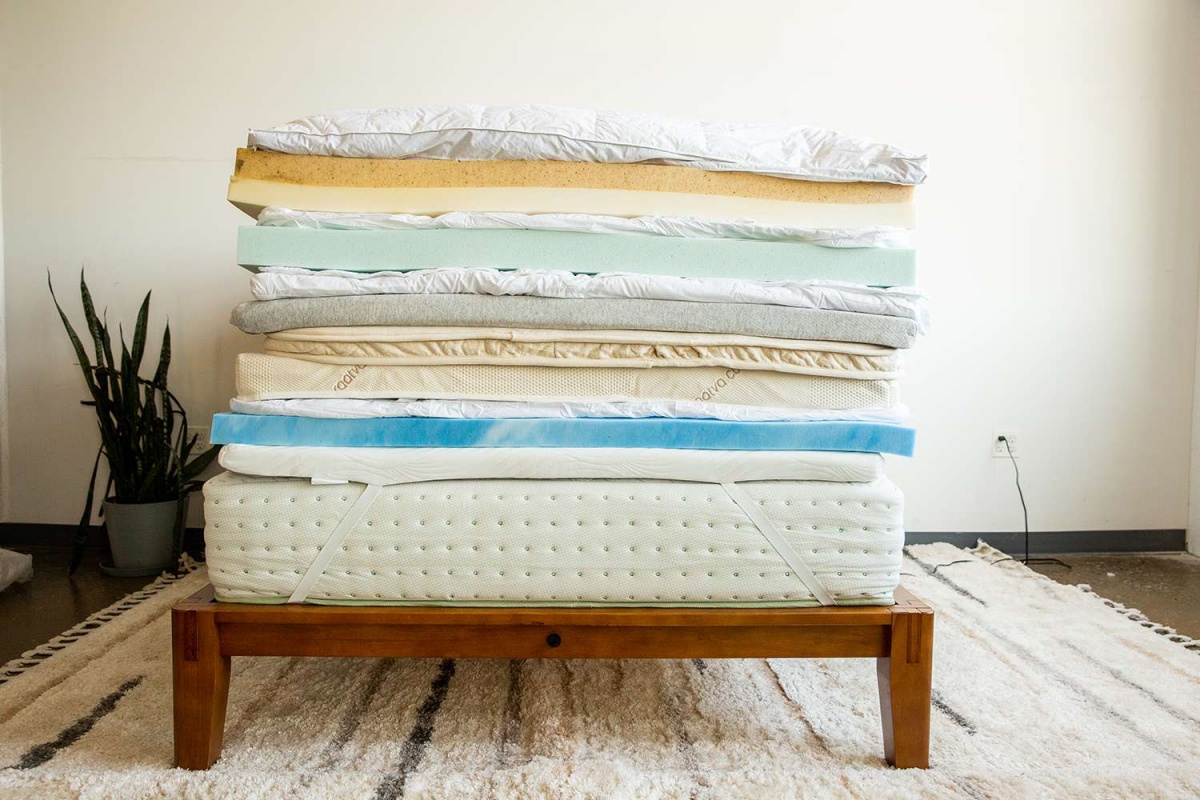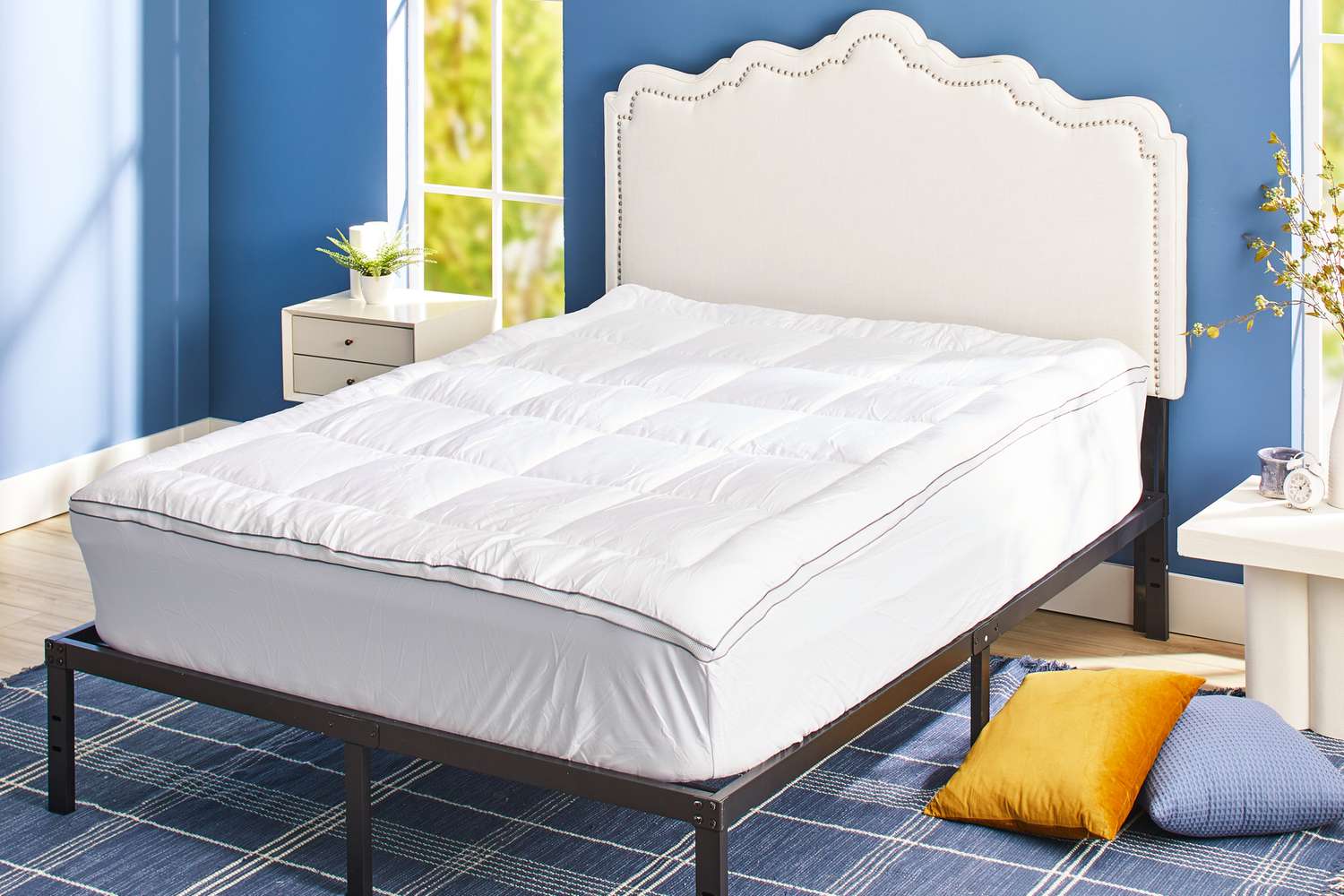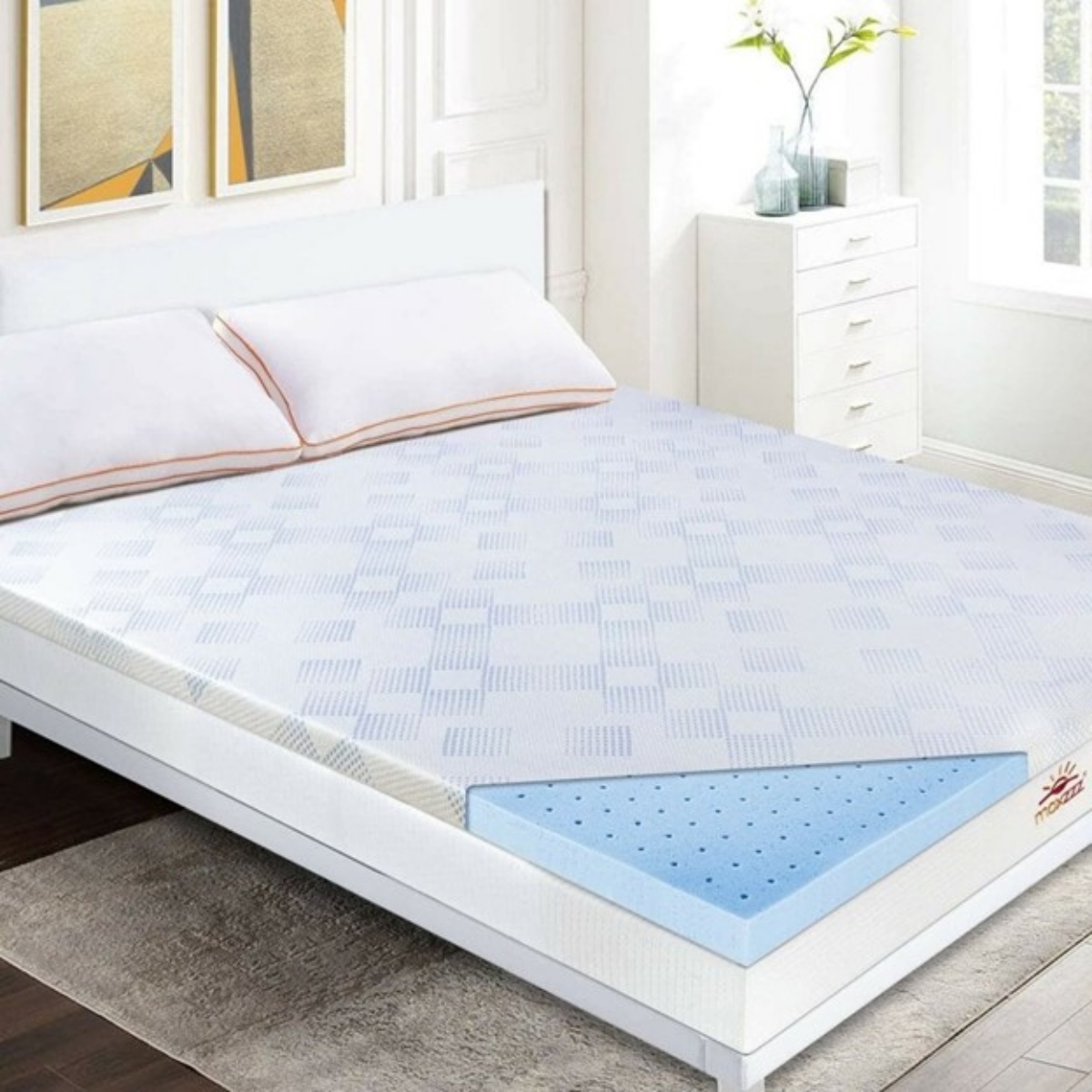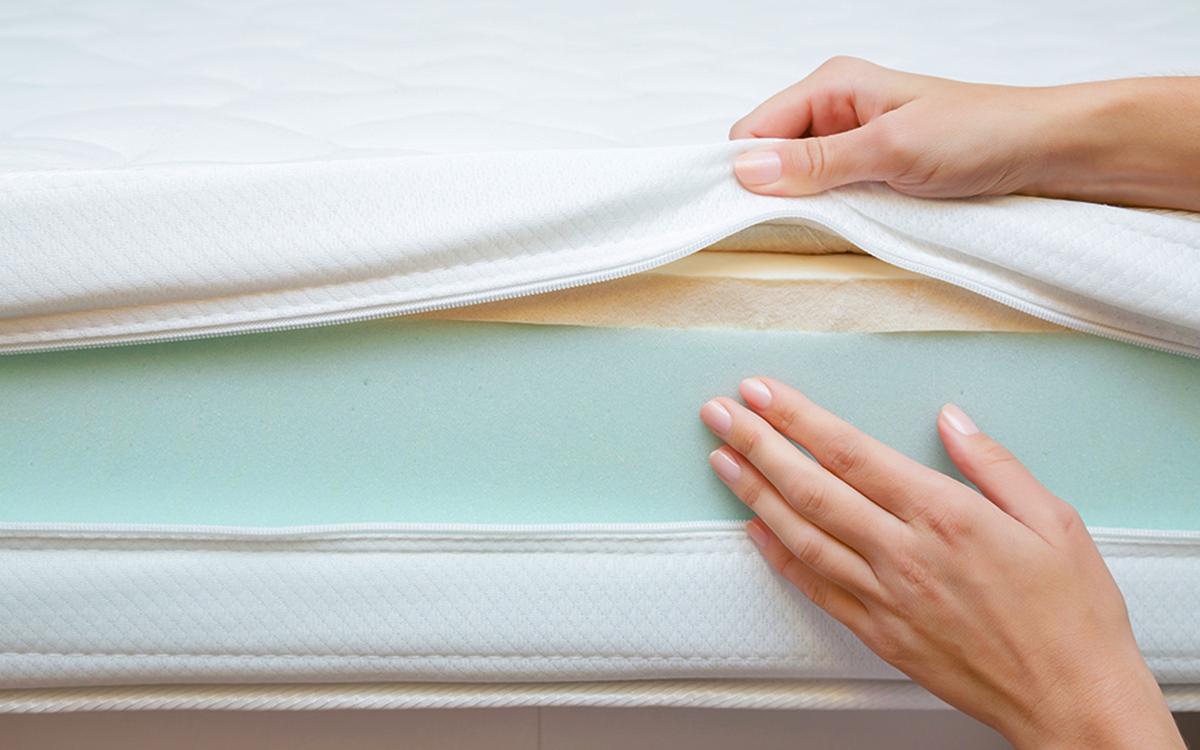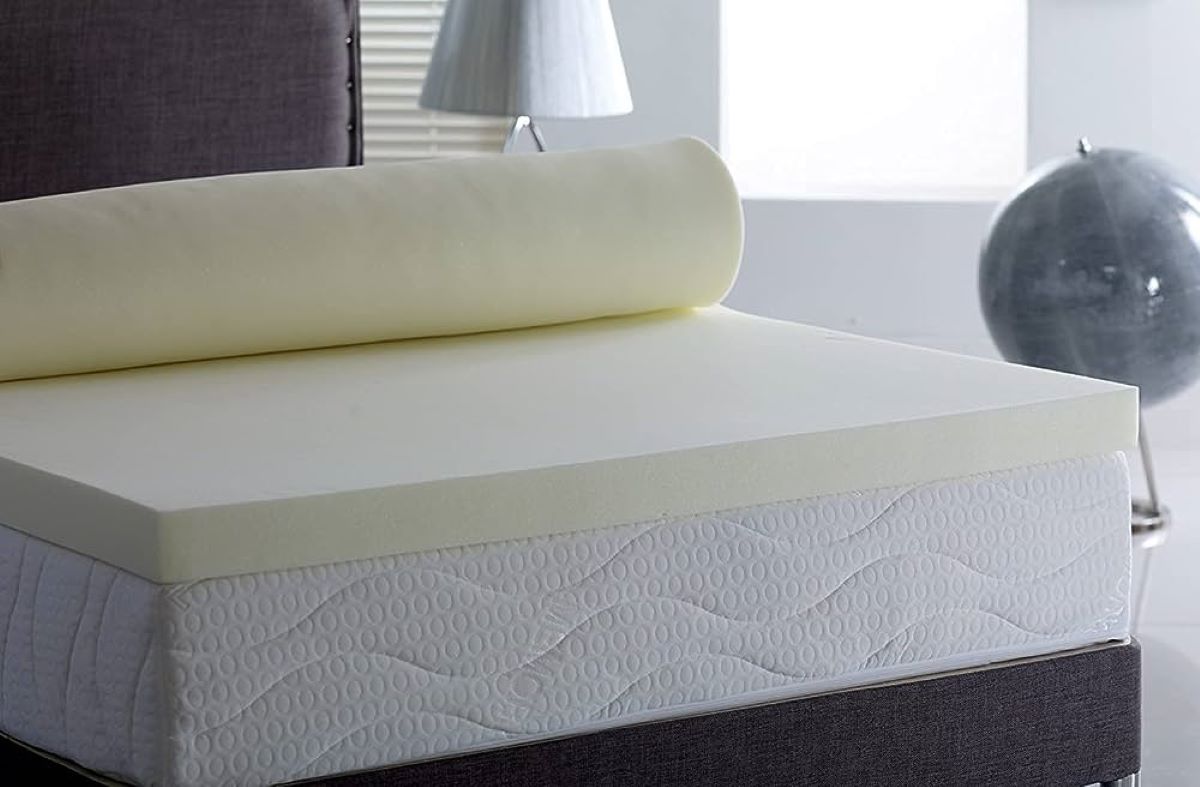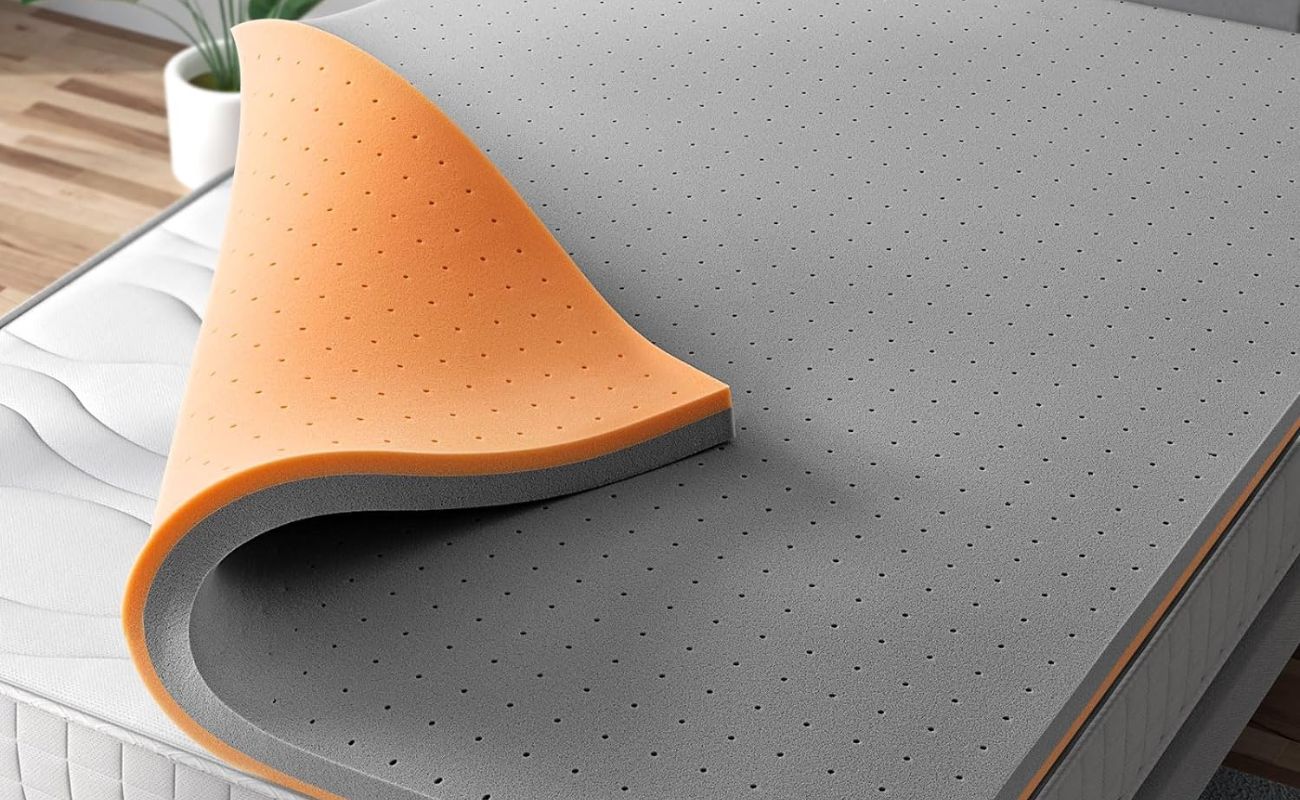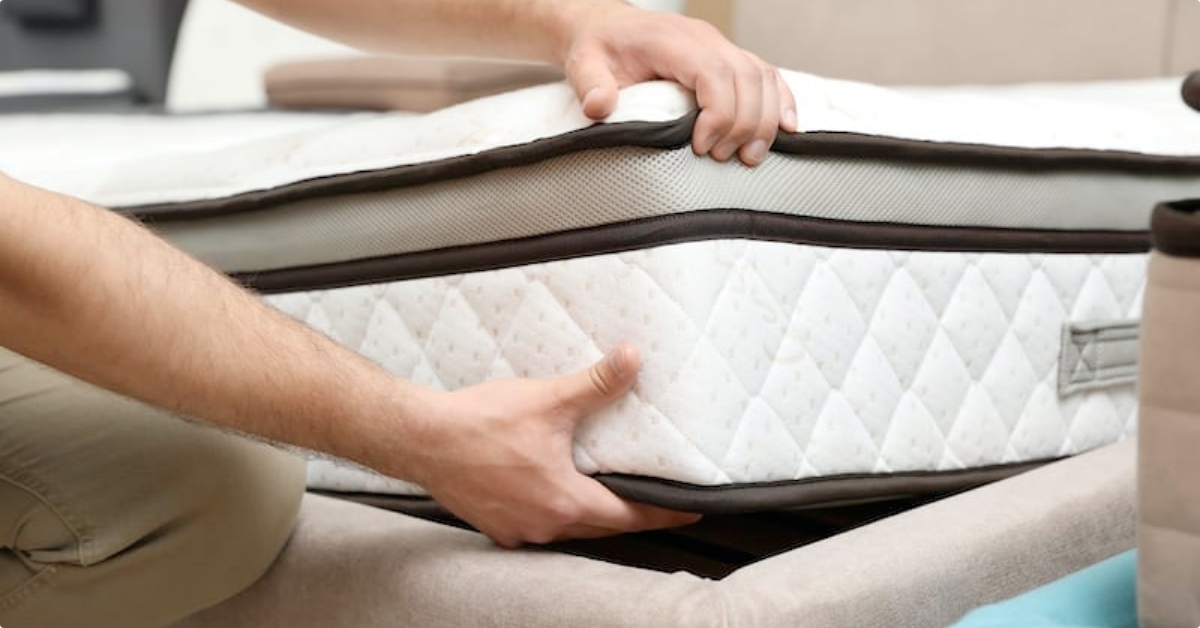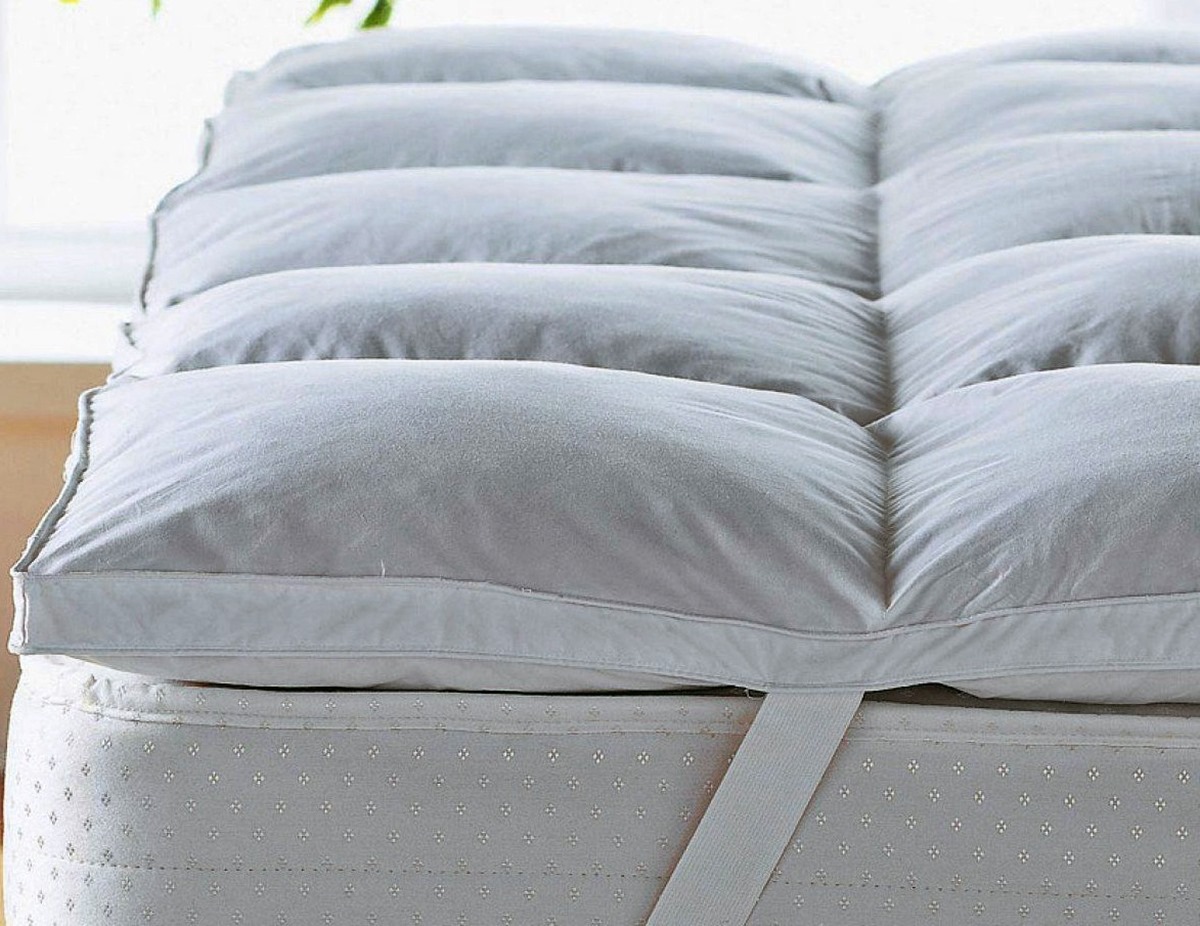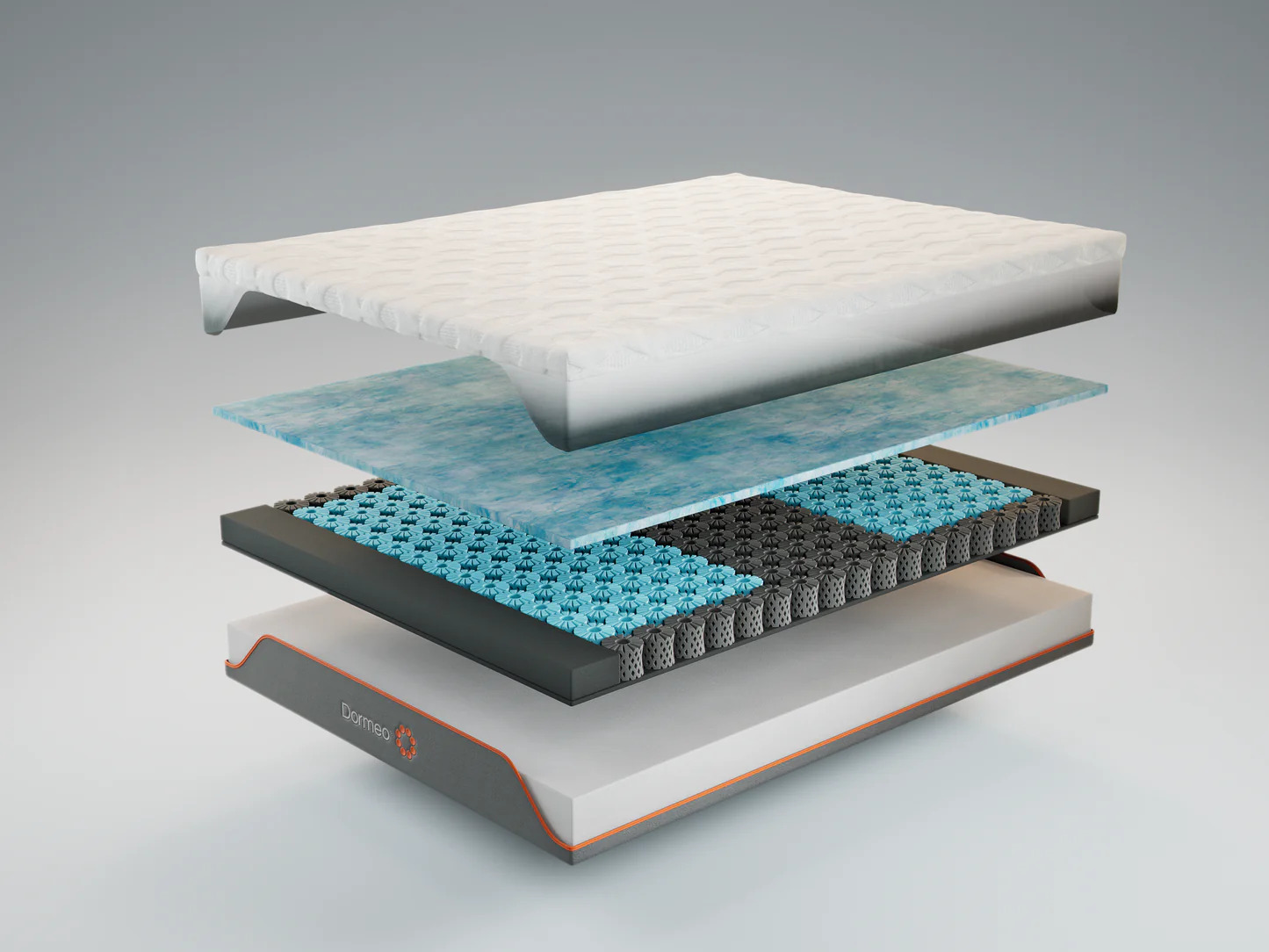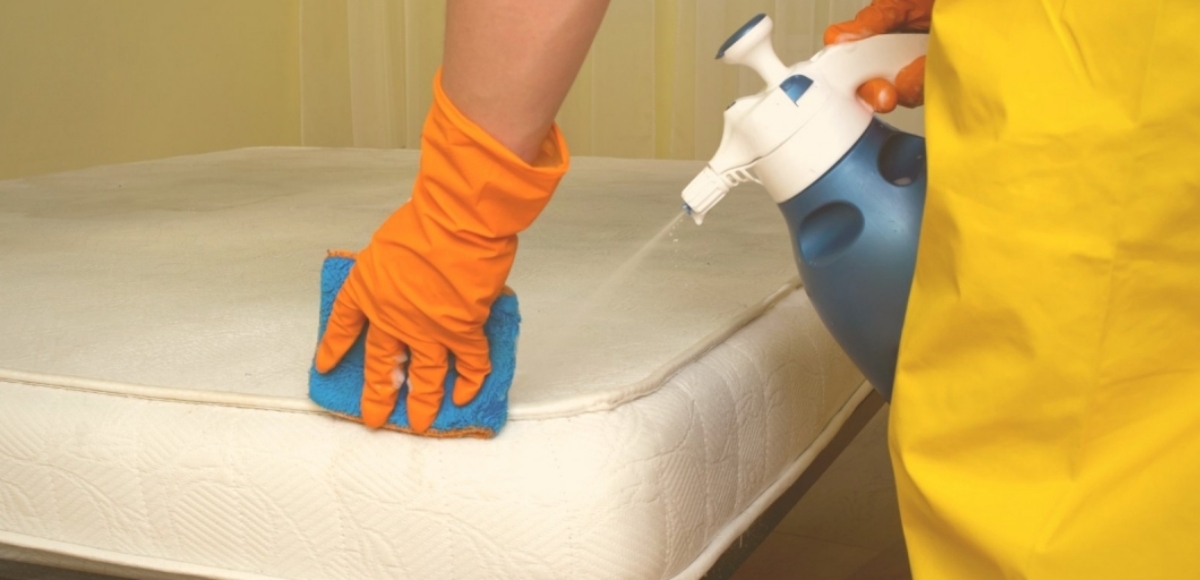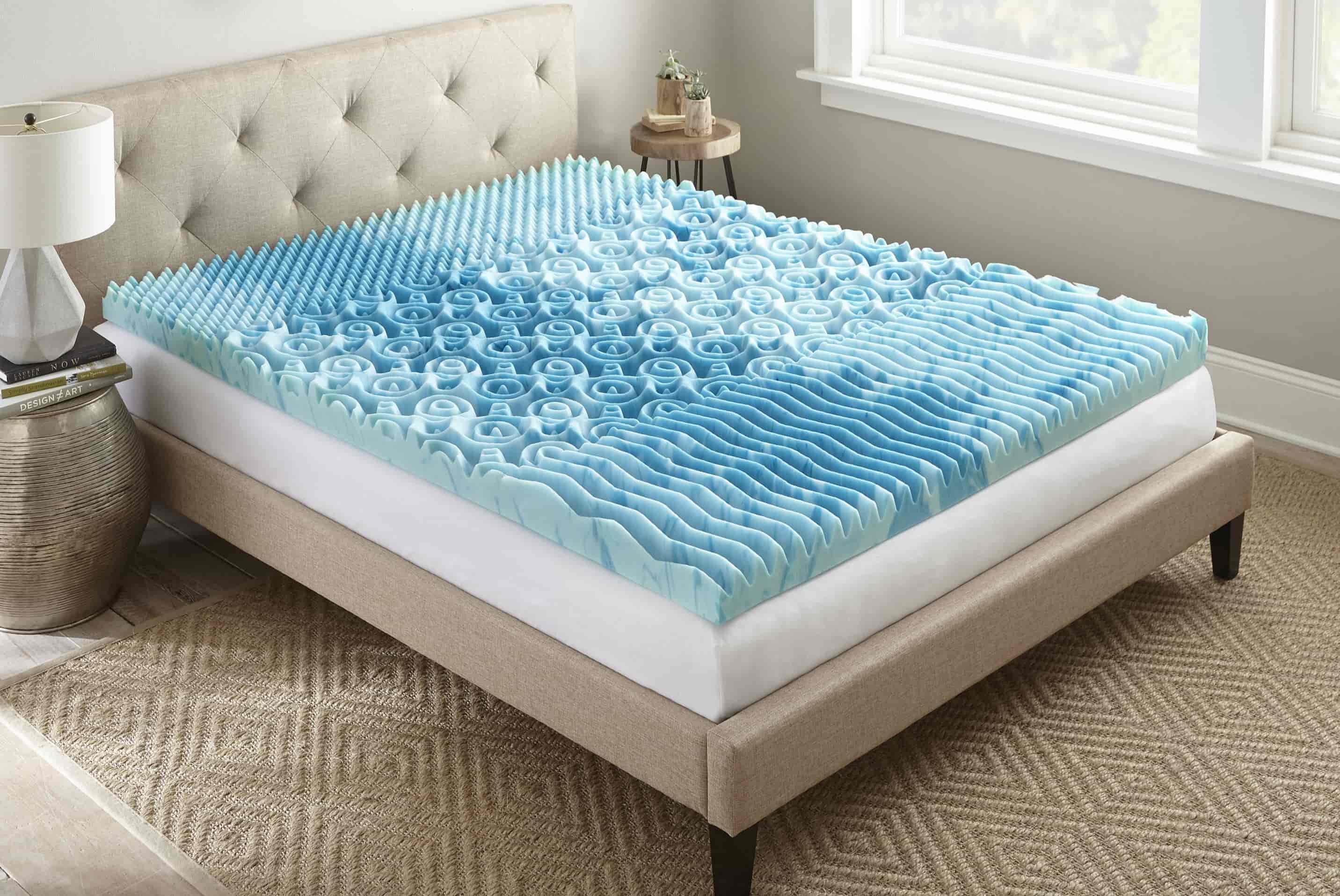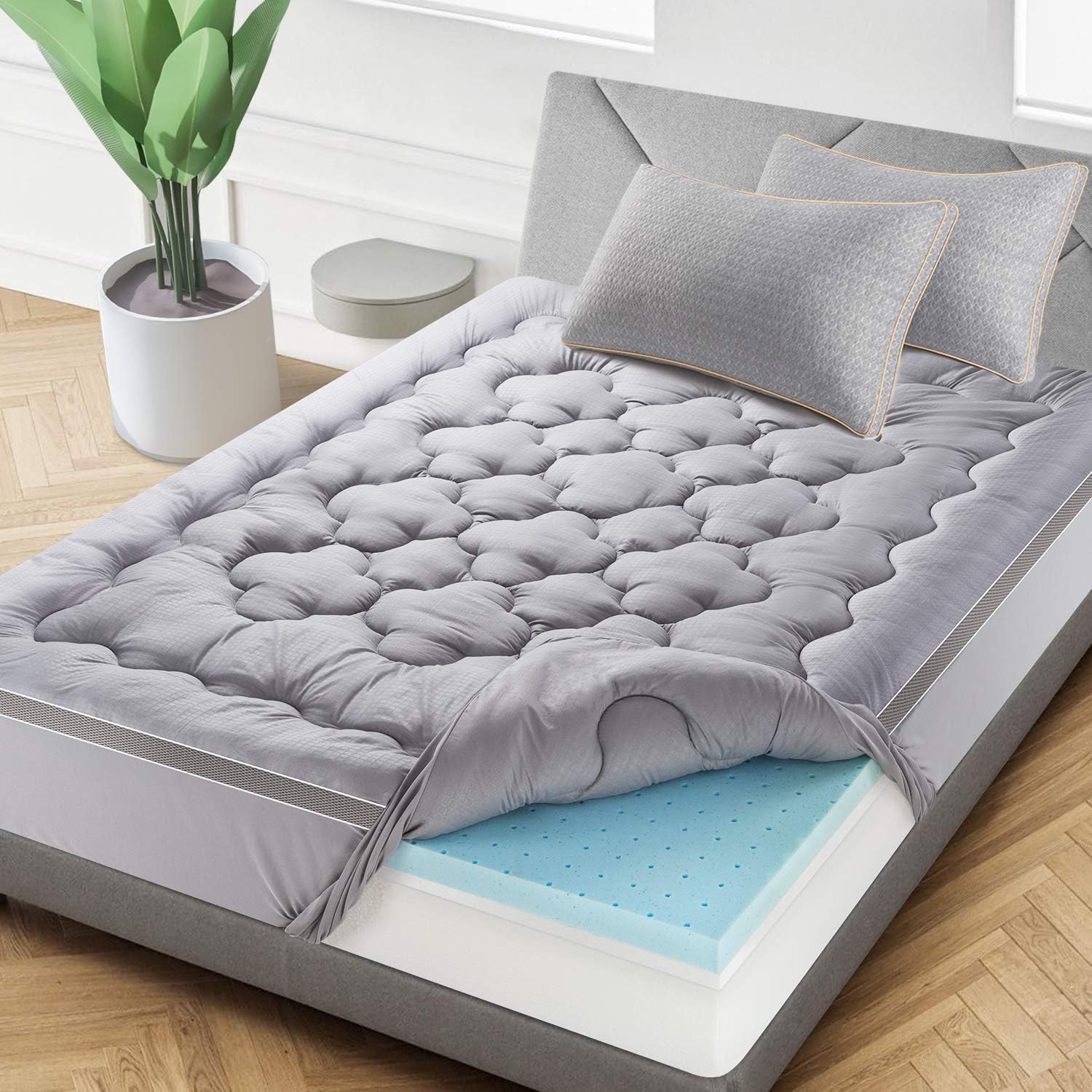Home>Furniture>Bedroom Furniture>How To Choose A Mattress Topper
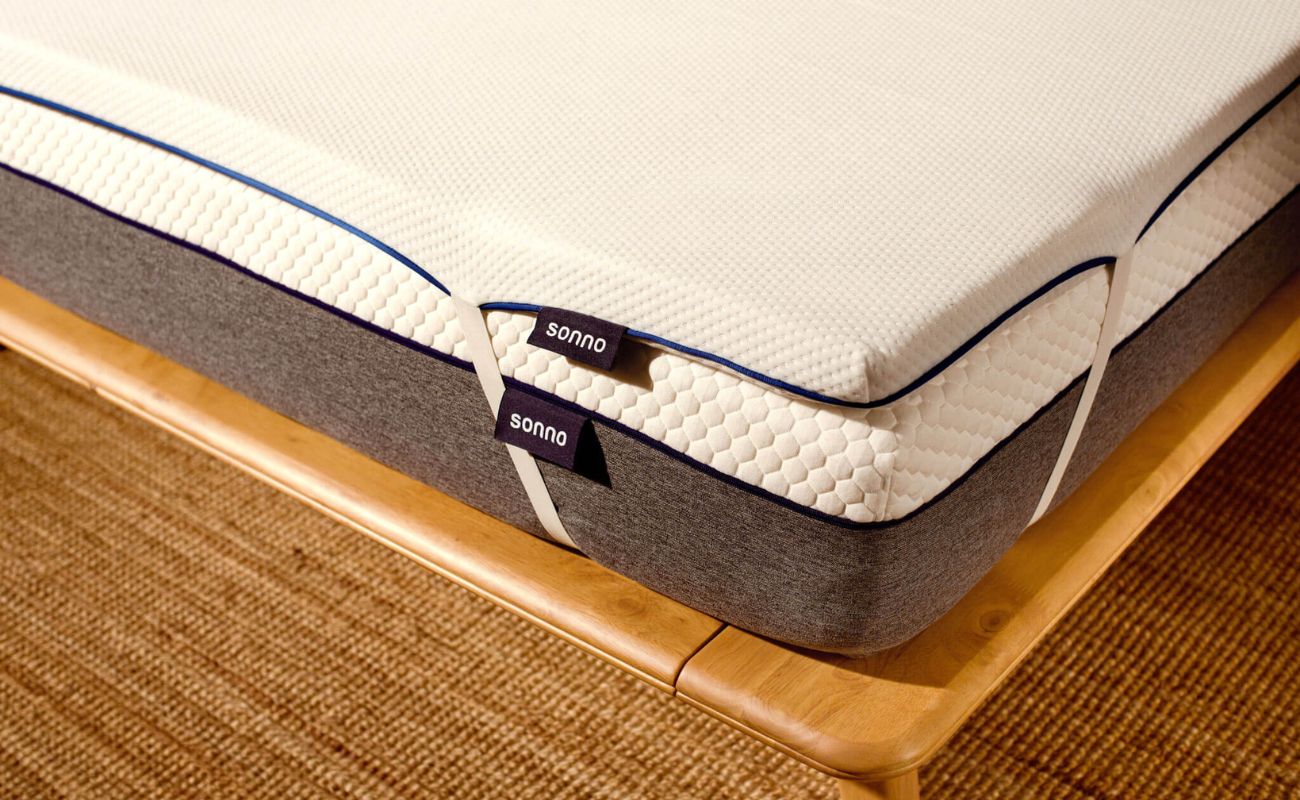

Bedroom Furniture
How To Choose A Mattress Topper
Modified: October 21, 2024
Looking for a mattress topper for your bedroom furniture? Discover how to choose the perfect one with our expert tips and recommendations.
(Many of the links in this article redirect to a specific reviewed product. Your purchase of these products through affiliate links helps to generate commission for Storables.com, at no extra cost. Learn more)
Introduction
Choosing the right mattress topper can significantly enhance your sleep experience and transform your bedroom into a cozy sanctuary. A mattress topper is an additional layer of padding that sits on top of your mattress, providing extra comfort and support. Whether you’re looking to alleviate pressure points, regulate temperature, or simply add a plush layer to your bed, there are several factors to consider before making your purchase.
In this article, we will explore the various types of mattress toppers available, including memory foam, latex, feathers, wool, and cooling toppers. We will delve into the importance of thickness and density, how to ensure the right size and compatibility, and the essentiality of maintenance and cleaning practices. Furthermore, we will offer insights into budget considerations to help you make an informed decision.
When it comes to choosing a mattress topper, it’s crucial to understand your specific needs and preferences. By doing so, you will be able to select the perfect topper that complements your mattress and transforms your sleep experience. So, let’s dive in and discover how to choose the ideal mattress topper for your bedroom!
Key Takeaways:
- Transform your sleep experience by choosing the right mattress topper that suits your unique needs and preferences, considering factors such as comfort, support, allergies, temperature regulation, and durability.
- Explore various types of mattress toppers, including memory foam, latex, feather, wool, and cooling toppers, each offering distinct benefits and features to enhance your sleep environment.
Read more: How To Fold A Mattress Topper
Factors to Consider before Buying a Mattress Topper
Before purchasing a mattress topper, there are several essential factors to consider to ensure that you make the right choice for your specific needs. Let’s explore these factors in detail:
- Comfort: Comfort is subjective and varies from person to person. Some prefer a soft and plush topper, while others may opt for a firmer option. Consider your personal preference and choose a topper that provides the level of comfort you desire.
- Support: A mattress topper should offer adequate support to align your spine and alleviate any pressure points. Look for a topper that contours to your body shape and provides optimal support for a restful night’s sleep.
- Allergies: If you have allergies or sensitivities, it’s essential to choose a hypoallergenic mattress topper. Look for options that are resistant to dust mites, mold, and other allergens to ensure a healthy sleep environment.
- Temperature Regulation: If you tend to sleep hot or live in a warmer climate, consider a mattress topper with cooling properties. Materials such as gel-infused memory foam or breathable latex can help dissipate heat and keep you cool throughout the night.
- Durability: Investing in a durable mattress topper ensures that it will last for years to come. Look for toppers made from high-quality materials that are resistant to wear and tear.
- Motion Isolation: If you share your bed with a partner or are easily disturbed by movements during sleep, choose a mattress topper with excellent motion isolation properties. Memory foam or latex toppers are known for their ability to absorb and minimize motion transfer.
- Edge Support: If you frequently sit or sleep near the edge of the bed, consider a topper that offers good edge support. This will prevent sagging and provide a stable surface even at the perimeter of the mattress.
- Health Considerations: If you have specific health concerns, such as back or joint pain, consult with your healthcare professional for recommendations on the best type of mattress topper that can alleviate your symptoms.
- Trial Period and Warranty: Check if the mattress topper comes with a trial period or warranty. This allows you to test it out and ensure it meets your expectations. A warranty provides peace of mind, knowing that the manufacturer stands behind their product.
Considering these factors before buying a mattress topper will help you narrow down your options and find the perfect one that meets your unique needs. Now, let’s explore the different types of mattress toppers available in the market.
Types of Mattress Toppers
When it comes to mattress toppers, there are several options available, each offering its own set of benefits and features. Let’s explore the most common types of mattress toppers:
- Memory Foam Toppers: Memory foam toppers are made from a material that softens and molds to your body’s contours, providing excellent pressure relief and support. They are known for their ability to minimize motion transfer and alleviate discomfort associated with back and joint pain. Memory foam toppers come in various densities, with higher densities offering firmer support.
- Latex Toppers: Latex toppers are made from a natural or synthetic latex material. They are known for their responsiveness, buoyancy, and excellent support. Latex toppers provide a balance of comfort and support, and they are naturally hypoallergenic and resistant to dust mites and mold. They also have good temperature regulation properties, making them suitable for hot sleepers.
- Feather Toppers: Feather toppers are filled with a combination of feathers and down. They offer a luxurious and plush sleeping surface. Feather toppers are known for their softness and breathability, allowing for adequate airflow. However, they may not provide as much support as other types of toppers and may require regular fluffing to maintain their loft.
- Wool Toppers: Wool toppers are made from natural wool fibers. They offer exceptional temperature regulation, keeping you cool in the summer and warm in the winter. Wool toppers are also hypoallergenic, resistant to dust mites, and naturally moisture-wicking. They provide a soft and comfortable sleeping surface while offering good support.
- Cooling Toppers: Cooling toppers are specifically designed to regulate body temperature and provide a cool sleep environment. They are often made from materials such as gel-infused memory foam, breathable latex, or advanced cooling fabrics. These toppers absorb and dissipate heat, keeping you comfortable throughout the night.
Each type of mattress topper has its unique characteristics and benefits. Consider your personal preferences, sleep needs, and budget when choosing the right type of topper for your bed. It’s also important to keep in mind factors such as thickness, density, size, and maintenance requirements, which we will explore in the following sections.
Now that we have explored the different types of mattress toppers, let’s dive deeper into memory foam toppers and discover their unique properties and benefits.
Memory Foam Toppers
Memory foam mattress toppers are a popular choice due to their ability to contour to your body shape, provide pressure relief, and enhance overall sleep comfort. Here’s what you need to know about memory foam toppers:
Material and Construction: Memory foam is made from a type of viscoelastic foam that responds to heat and pressure. When you lay on a memory foam topper, it softens and molds to your body, creating a personalized sleeping surface. The foam cell structure allows it to retain its shape when pressure is released.
Pressure Relief and Support: Memory foam toppers offer excellent pressure relief by distributing your body weight evenly and relieving pressure points. They conform to your body curves, reducing stress on joints and alleviating discomfort. This makes memory foam toppers particularly beneficial for individuals with back, neck, or joint pain.
Motion Isolation: One of the key advantages of memory foam toppers is their ability to minimize motion transfer. If you share a bed with a partner, you won’t be disturbed by their movements during the night. This feature translates into a more peaceful and undisturbed sleep experience.
Density and Firmness: Memory foam toppers come in various densities, typically ranging from 2-5 pounds per cubic foot (PCF). Higher density foams offer firmer support, while lower density foams provide a softer feel. The right density for you depends on your personal preference and desired level of support.
Temperature Sensitivity: Traditional memory foam has a reputation for trapping heat, which can lead to a warmer sleep experience. However, many modern memory foam toppers are infused with cooling gel or have open-cell structures to enhance breathability and regulate temperature. This allows for a cooler and more comfortable sleep environment.
Thickness: Memory foam toppers come in various thicknesses, typically ranging from 2 to 4 inches. Thicker toppers generally offer more plushness and cushioning, while thinner toppers provide a more subtle addition to your mattress. Consider your comfort preferences and how much additional height you want to add to your bed.
Care and Maintenance: Memory foam toppers are relatively easy to maintain. Most come with a removable and washable cover, allowing for easy cleaning. It’s recommended to spot clean any stains and ensure proper air circulation to prevent moisture buildup.
Compatibility: Memory foam toppers are compatible with most types of mattresses, including innerspring, latex, and hybrid mattresses. They can provide a significant upgrade to an older or firmer mattress, enhancing its comfort and support.
Odor and Off-Gassing: When first unpacked, memory foam toppers may have a noticeable odor due to the manufacturing process. This is known as off-gassing and is temporary. It’s recommended to allow the topper to air out for a few hours or days before using it.
Budget Considerations: The price of memory foam toppers can vary depending on factors such as density, thickness, and brand. It’s important to find a balance between quality and affordability. Consider how much you are willing to invest in a topper that will meet your sleep needs and provide long-term comfort.
Memory foam toppers offer a luxurious and supportive sleeping surface, providing the perfect solution for those seeking pressure relief and enhanced comfort. However, they may not be suitable for individuals who prefer a bouncier or more responsive sleeping surface. Now that we have explored memory foam toppers, let’s move on to another popular option: latex toppers.
Latex Toppers
Latex mattress toppers are highly regarded for their responsiveness, durability, and natural properties. Here’s everything you need to know about latex toppers:
Material: Latex toppers are made from natural latex or a synthetic latex variant. Natural latex is derived from the sap of rubber trees, while synthetic latex is made from petroleum-based materials. Natural latex is considered more eco-friendly and is often preferred for its sustainability and biodegradability.
Responsiveness and Support: Latex toppers are known for their exceptional responsiveness, which means they quickly adjust to your body movements without making you feel stuck. They provide a balance of comfort and support by contouring to your body shape and offering optimal spinal alignment.
Breathability and Temperature Regulation: Latex toppers have a natural open-cell structure, allowing for excellent airflow and breathability. This helps regulate body temperature and prevents heat buildup, making them suitable for those who struggle with overheating during sleep.
Durability: Latex toppers are highly durable and long-lasting. They are resistant to sagging, deformation, and general wear and tear, making them an excellent investment. Natural latex tends to be more durable than synthetic latex and can last for many years with proper care.
Hypoallergenic and Resistant: Latex toppers are naturally hypoallergenic and resistant to allergens such as dust mites, mold, and mildew. This makes them an excellent choice for individuals with allergies or asthma, as they provide a clean and allergen-free sleep environment.
Pressure Relief: Latex toppers offer excellent pressure relief by evenly distributing body weight and relieving pressure points. This can help alleviate pain and discomfort, particularly in areas such as the shoulders, hips, and lower back.
Responsiveness: Latex toppers have a unique bounce and responsiveness that allows for easy movement during sleep. If you prefer a slightly buoyant sleeping surface that doesn’t cause you to sink in too deeply, latex toppers are a great choice.
Thickness: Latex toppers typically come in thicknesses ranging from 2 to 4 inches. Thicker toppers offer more cushioning and plushness, while thinner toppers provide a subtle addition to your mattress. Consider your comfort preferences and the desired level of support when choosing the thickness of your latex topper.
Care and Maintenance: Latex toppers are relatively low-maintenance. They can be spot cleaned for minor spills or stains, and regular airing out is recommended to ensure proper ventilation. Some latex toppers come with a removable cover that can be washed, providing added convenience.
Compatibility: Latex toppers are compatible with most types of mattresses, including innerspring, memory foam, and hybrid mattresses. They can enhance the comfort and support of your existing mattress, making it feel more luxurious and conducive to restful sleep.
Budget Considerations: Latex toppers tend to be priced slightly higher than other types of toppers due to their durability and quality. However, they offer long-term value and can extend the lifespan of your mattress. Consider your budget and the importance of investing in a topper that will provide years of comfort and support.
Latex toppers are a popular choice for those seeking a responsive and supportive sleeping surface with natural properties. They offer excellent pressure relief, durability, and breathability, making them a suitable option for a wide range of sleepers. Now, let’s explore another option: feather toppers.
Read more: How To Store Mattress Topper
Feather Toppers
Feather mattress toppers offer a luxurious and plush sleeping surface, providing a cozy and comfortable experience. Here’s what you need to know about feather toppers:
Material and Construction: Feather toppers are filled with a combination of feathers and down. The feathers provide structure and support, while the down adds softness and fluffiness. The combination of feathers and down creates a cloud-like feel and a cozy sleeping surface.
Softness and Breathability: Feather toppers are known for their softness and breathability, making them a popular choice for those who prefer a cozy and enveloping sleep experience. The feathers allow for air circulation, keeping you comfortable and preventing overheating during the night.
Thickness and Loft: Feather toppers come in various thicknesses and loft levels. Thicker toppers typically provide more cushioning and plushness, while thinner toppers offer a more subtle addition to your mattress. Consider your comfort preferences and desired level of support when choosing the thickness and loft of your feather topper.
Comfort and Fluffing: Feather toppers have a luxurious feel and a natural ability to conform to your body shape. However, they may require regular fluffing to maintain their loft and plushness. Fluffing helps redistribute the feathers and ensures an even sleeping surface.
Durability and Care: Feather toppers require proper care to maintain their quality and longevity. It’s important to protect them with a removable cover and perform regular spot cleaning to remove any spills or stains. It’s also recommended to shake and aerate the topper occasionally to maintain its loft and freshness.
Compatibility: Feather toppers can be used with various types of mattresses, including innerspring, memory foam, latex, and hybrid mattresses. They add a luxurious and plush layer on top of your existing mattress, enhancing its comfort and providing a cozy sleeping surface.
Consideration for Allergies: If you have allergies or sensitivities to feathers or down, feather toppers may not be suitable for you. Feather toppers may trigger allergies in some individuals due to potential exposure to allergens such as dust mites or feathers themselves. It’s important to consider your personal health conditions before choosing a feather topper.
Budget Considerations: Feather toppers are generally more affordable compared to memory foam or latex toppers. They offer a luxurious sleeping surface at a more budget-friendly price point. If you’re looking for a soft and plush topper without breaking the bank, a feather topper may be an excellent option.
Feather toppers provide a plush and comfortable sleeping surface, perfect for individuals who prefer a softer and enveloping feel. They offer a cozy layer of cushioning and a luxurious addition to your existing mattress. Next, let’s explore another natural option: wool toppers.
Wool Toppers
Wool mattress toppers are a natural and sustainable choice, offering exceptional temperature regulation and comfort. Here’s what you need to know about wool toppers:
Material and Construction: Wool toppers are made from natural wool fibers, typically sourced from sheep. The wool is carefully processed and woven into a layer that provides softness and comfort. The natural properties of wool make it an excellent material for mattress toppers.
Temperature Regulation: Wool toppers excel in temperature regulation, helping you stay cool in warm weather and warm in cool weather. Wool fibers naturally wick away moisture, allowing for better air circulation and preventing heat buildup. This makes wool toppers suitable for year-round use, regardless of the climate.
Moisture-Wicking and Breathability: Wool fibers have inherent moisture-wicking properties, which means they can absorb moisture without feeling damp. This helps keep you dry and comfortable during sleep. Wool toppers also have excellent breathability, allowing for proper airflow and preventing the growth of mold or mildew.
Softness and Comfort: Wool toppers provide a soft and luxurious sleeping surface. The wool fibers offer a gentle cushioning effect that contours to your body shape while providing a comfortable and supportive feel. The natural elasticity of wool ensures that the topper maintains its shape and loft over time.
Hypoallergenic and Resistant: Wool toppers are naturally hypoallergenic, making them an excellent choice for individuals with allergies or sensitivities. Wool fibers are resistant to dust mites, mold, and mildew, providing a clean and allergen-free sleep environment.
Durability and Longevity: Wool toppers are known for their durability and longevity. With proper care, they can last for many years. The natural resilience of wool ensures that the topper retains its loft and comfort over time, providing consistent performance and support.
Care and Maintenance: Wool toppers require minimal maintenance. Regular airing out and occasional shaking help keep the topper fresh. Spot cleaning is recommended for any spills or stains. Some wool toppers come with a removable cover that can be washed to keep the topper clean and hygienic.
Compatibility: Wool toppers are compatible with most types of mattresses, including innerspring, memory foam, latex, and hybrid mattresses. They provide an extra layer of comfort and support, enhancing the overall sleeping experience.
Budget Considerations: Wool toppers are typically priced in the mid to higher range due to their natural properties and quality. They offer excellent value for their durability and the unique benefits they provide. If you’re seeking a natural and luxurious sleeping surface, a wool topper is worth considering.
Wool toppers offer natural temperature regulation, comfort, and durability. They provide a cozy and breathable sleeping surface that supports a restful and rejuvenating night’s sleep. Now that we have explored wool toppers, let’s move on to an option specifically designed for temperature control: cooling toppers.
When choosing a mattress topper, consider the material and thickness that best suits your comfort needs. Memory foam toppers provide contouring support, while latex toppers offer a more responsive feel.
Cooling Toppers
Cooling mattress toppers are specifically designed to regulate temperature and provide a cooler sleep experience. Here’s what you need to know about cooling toppers:
Materials and Construction: Cooling toppers are typically made from materials that have excellent heat dissipation properties, such as gel-infused memory foam, breathable latex, or advanced cooling fabrics. These materials are engineered to actively draw heat away from your body.
Temperature Regulation: Cooling toppers excel in temperature regulation, helping to dissipate excess heat and maintain a cooler sleep environment. The cooling materials used in these toppers absorb and disperse heat, enabling you to sleep comfortably throughout the night without feeling overheated.
Breathability and Airflow: Cooling toppers prioritize breathability to enhance airflow. This allows for better ventilation and heat dissipation, preventing the buildup of moisture and ensuring a comfortable sleep surface. The improved airflow helps in regulating temperature and reducing the likelihood of night sweats.
Pressure Relief and Support: Cooling toppers not only regulate temperature but also provide pressure relief and support. They are designed to contour to your body shape, alleviate pressure points, and promote proper spinal alignment. This ensures a comfortable and supportive sleep surface.
Compatibility: Cooling toppers are compatible with various types of mattresses, including memory foam, latex, and hybrid mattresses. They can be used to upgrade your existing mattress and enhance its cooling properties, providing you with improved comfort and temperature control.
Thickness: Cooling toppers come in various thicknesses, typically ranging from 2 to 4 inches. Thicker toppers can offer more cushioning and are suitable for those in need of additional support. Thinner toppers provide a more subtle addition to your mattress, making them a suitable choice if you prefer a plush feel without significant height increase.
Care and Maintenance: Cooling toppers usually come with a removable cover that can be machine washed, making maintenance a breeze. Additionally, spot cleaning any spills or stains is recommended to keep the topper clean and hygienic.
Budget Considerations: The price range of cooling toppers varies depending on the materials used and the brand. While they may be priced slightly higher than traditional toppers, their ability to provide temperature regulation and improved sleep comfort makes them a worthwhile investment for individuals who struggle with overheating during sleep.
Cooling toppers offer an effective solution for those who want to achieve a cooler and more comfortable sleep environment. By regulating temperature and enhancing airflow, these toppers can help you sleep soundly and wake up refreshed. Now that we have explored various types of mattress toppers, let’s delve into some key factors to consider when choosing the right topper for you.
Thickness and Density
When selecting a mattress topper, considering the thickness and density is crucial to ensure optimal comfort and support. Here’s what you need to know about thickness and density:
Thickness: The thickness of a mattress topper refers to the height or depth of the topper. Toppers are available in various thickness options, typically ranging from 1 to 4 inches. The ideal thickness depends on personal preference and the level of cushioning or support you desire.
If you’re looking for a subtle addition to your mattress, a thinner topper (1-2 inches) can provide a subtle layer of cushioning. This is suitable if you prefer to maintain the firmness of your existing mattress while adding a touch of extra comfort.
For individuals seeking more significant changes to their sleep surface, thicker toppers (3-4 inches) offer more substantial cushioning and can dramatically alter the feel of the mattress. These toppers are ideal for those looking to soften a firm mattress or add extra comfort for pressure relief.
Consider your comfort needs, body weight, and any specific conditions like back pain or joint discomfort when deciding on the appropriate thickness for your mattress topper.
Density: Density pertains to the weight of the foam used in memory foam and latex mattress toppers. It is measured in pounds per cubic foot (PCF) and indicates the level of support the topper offers.
In general, higher density toppers (around 4-5 PCF for memory foam) are firmer and provide more support. These toppers are often recommended for individuals with back pain or those in need of additional support around pressure points.
Lower density toppers (around 2-3 PCF for memory foam) are softer and provide a more plush feel. They offer a gentle cradling sensation and are suitable for individuals who prefer a softer sleeping surface.
When selecting a latex topper, density is typically measured in Dunlop or Talalay ratings. Dunlop latex is denser and more supportive, while Talalay latex offers a softer and more responsive feel. Choose a density and type of latex that aligns with your comfort preferences and support needs.
It’s important to note that personal preference plays a significant role in determining the ideal thickness and density for your mattress topper. Consider your sleeping position, body weight, and any specific requirements to find the perfect balance between comfort and support.
Now that we’ve explored the importance of thickness and density, let’s move on to another crucial factor in choosing a mattress topper – size and compatibility.
Read more: How To Put Mattress Topper On Bed
Size and Compatibility
When selecting a mattress topper, considering the size and compatibility is essential to ensure a proper fit and enhance your sleep experience. Here’s what you need to know about size and compatibility:
Size: It’s crucial to choose a mattress topper that matches the size of your existing mattress. Most toppers come in standard mattress sizes, including Twin, Twin XL, Full, Queen, King, and California King. Measure your mattress dimensions carefully and select a topper that aligns accordingly.
A topper that is too small will not provide adequate coverage, leaving some areas of your mattress exposed. On the other hand, a topper that is too large may overhang the sides of your mattress, leading to an unstable and uncomfortable sleeping surface. Ensure that the topper dimensions match your mattress dimensions for the best fit.
Compatibility: Ensure that the topper you choose is compatible with your mattress type. Most mattress toppers are suitable for use with various mattress types, such as innerspring, memory foam, latex, and hybrid mattresses.
If you have a memory foam mattress, you may prefer a memory foam topper that enhances the contouring and pressure-relieving properties. Latex toppers can work well with latex mattresses, offering additional cushioning and breathability. Consider your mattress type and select a topper that complements its characteristics.
Additionally, check if the topper has features that cater to any particular needs you may have. For example, if you have allergies, look for toppers that are hypoallergenic and resistant to dust mites and mold. If you tend to sleep hot, opt for cooling toppers with materials that promote airflow and temperature regulation.
By ensuring compatibility between your mattress and topper, you can create a harmonious sleep environment that maximizes comfort and support.
Before making a purchase, carefully review the product specifications and consult the manufacturer’s guidelines to confirm that the topper is compatible with your mattress and meets your specific requirements.
Now that we’ve covered size and compatibility, let’s move on to another important aspect to consider when choosing a mattress topper – maintenance and cleaning.
Maintenance and Cleaning
Maintaining and cleaning your mattress topper properly is essential to prolong its lifespan and keep it in optimal condition. Here are some key points to consider when it comes to maintenance and cleaning:
Regular Cleaning: It’s important to follow a regular cleaning routine to keep your mattress topper clean and hygienic. While specific cleaning instructions may vary depending on the topper material, here are some general guidelines:
- For toppers with removable covers: Remove the cover and machine wash it according to the manufacturer’s instructions. Ensure that it is completely dry before putting it back on the topper.
- For toppers without removable covers: Spot clean any spills or stains as soon as possible, using a mild detergent and warm water. Gently blot the affected area with a clean cloth, being careful not to saturate the topper. Allow the topper to air dry completely before placing bedding back on top.
- Avoid using harsh chemicals or bleach, as they can damage the topper material.
Protection: To protect your mattress topper from stains, spills, and dust accumulation, consider using a mattress protector or a fitted sheet specifically designed for toppers. These can provide an additional layer of protection and make cleaning easier.
Regular Rotation: To ensure even wear and maintain the shape of your mattress topper, rotate it every three to six months. This will help prevent excessive loft compression in specific areas and prolong the topper’s durability.
Airing Out: Allowing your mattress topper to air out periodically helps maintain its freshness. Place it in a well-ventilated area and expose it to fresh air and sunlight if possible. This can help eliminate any odors and refresh the topper’s materials.
Preventing Damage: Take precautions to prevent damage to your mattress topper. Avoid jumping or putting excess weight on the topper, as this can lead to compression and affect its overall performance. Additionally, protect it from sharp objects or harsh edges that can puncture or tear the topper.
Manufacturer Guidelines: Always refer to the manufacturer’s guidelines for specific care instructions and recommendations tailored to your mattress topper. Different materials may have specific requirements, and following these guidelines will help you maintain the topper’s quality and longevity.
By following these maintenance and cleaning practices, you can ensure that your mattress topper remains fresh, clean, and in top condition for an extended period. Additionally, regular care and cleaning will help preserve its performance and support for a comfortable sleep experience.
Now that we’ve covered maintenance and cleaning, let’s move on to another vital aspect to consider when choosing a mattress topper – budget considerations.
Budget Considerations
When selecting a mattress topper, it’s important to consider your budget and find a balance between the quality of the topper and its affordability. Here are some factors to consider when it comes to budget considerations:
Price Range: The price of mattress toppers can vary depending on various factors, such as the type of material, thickness, density, brand, and overall quality. Generally, memory foam and latex toppers tend to be priced higher compared to feather or wool toppers.
Quality and Durability: Consider the quality and durability of the topper when assessing its value for your budget. Investing in a higher-quality topper might have a higher upfront cost but can offer better longevity and performance in the long run. Cheaper alternatives may not provide the same level of comfort, support, or longevity.
Needs and Preferences: Consider your specific needs and preferences when determining how much to allocate for a mattress topper. If you have specific requirements such as pressure relief, temperature regulation, or allergy resistance, you may need to invest a bit more in a topper that meets those criteria.
Long-Term Investment: A mattress topper is an investment in your sleep quality and comfort. Considering the long-term benefits and how it can enhance the lifespan of your mattress can help justify a higher budget allocation. Remember that a high-quality topper can extend the life of your mattress, potentially saving you money in the long run.
Warranty and Trial Period: Check if the mattress topper comes with a warranty or trial period. A warranty provides peace of mind, knowing that the manufacturer stands behind their product. A trial period allows you to test the topper and ensure it meets your expectations. Both factors can influence the value of the topper and its suitability for your budget.
Comparing Prices: Shop around and compare prices from different brands and retailers to find the best deals. Do some research to ensure you’re getting the best value for your budget. Keep in mind that the cheapest option may not always be the best in terms of quality and longevity.
Budget Flexibility: Determine how flexible your budget is and prioritize your sleep needs accordingly. Assess your comfort requirements and the importance of investing in a topper that will provide the desired level of comfort and support.
Ultimately, it’s important to find a balance between your budget and the overall quality and benefits you seek in a mattress topper. By considering these budget considerations, you can make an informed decision and select a topper that offers the best value for your investment.
Now that we’ve covered budget considerations, let’s wrap up and summarize the key points we’ve discussed in this article.
Conclusion
Choosing the right mattress topper can greatly enhance your sleep experience and transform your bedroom into a haven of comfort and support. By considering factors such as comfort, support, allergies, temperature regulation, and durability, you can find the perfect topper that suits your unique needs and preferences.
We explored various types of mattress toppers, including memory foam, latex, feather, wool, and cooling toppers, each with its own benefits and features. Memory foam toppers provide excellent pressure relief and motion isolation, while latex toppers offer responsiveness and natural properties. Feather toppers provide a luxurious feel, and wool toppers excel in temperature regulation. Cooling toppers are specifically designed to regulate temperature for a cool sleep experience.
We also discussed the importance of thickness and density. The thickness of a topper can range from subtle cushioning to a more dramatic transformation of your mattress. Density determines the level of support the topper provides, with higher densities generally offering firmer support.
In addition, we explored the significance of size and compatibility to ensure a proper fit between your mattress and topper. Proper maintenance and cleaning practices help prolong the lifespan of your topper, ensuring that it stays fresh and hygienic for years to come.
When considering your budget, remember that investing in a high-quality topper can offer long-term benefits, such as improved sleep quality, enhanced comfort, and prolonged mattress life. Compare prices, consider warranty and trial periods, and find the right balance between quality and budget for your specific needs.
With all these factors in mind, you can make an informed decision and select the perfect mattress topper that will provide the extra level of comfort, support, and sleep quality you desire. Now, it’s time to transform your bedroom into a sanctuary of relaxation and enjoy the restful nights you deserve.
Frequently Asked Questions about How To Choose A Mattress Topper
Was this page helpful?
At Storables.com, we guarantee accurate and reliable information. Our content, validated by Expert Board Contributors, is crafted following stringent Editorial Policies. We're committed to providing you with well-researched, expert-backed insights for all your informational needs.
